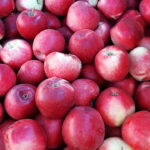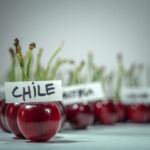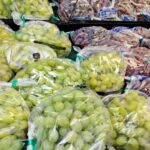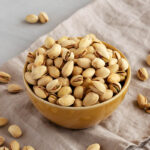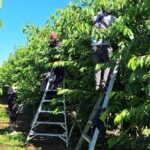New Spanish plum variety attracts Chilean growers

Chilean growers see promise in a new plum variety named ‘DB 30173’, developed from a breeding program in Spain.
María Clara Ogno, A.N.A Chile's product manager for stone and citrus fruits, said their first harvest last year produced good quality fruit with a long shelf life.
"The most relevant thing is its post-harvest life, so we evaluated it up to 42 days in cold storage, plus three days at room temperature," Ogno said. "It maintains its excellent flavor, and it does not present any alterations in the pulp."
She explained that means the ability to reach international markets in better condition.
Fruit characteristics
A.N.A Chile has started with five test trees of the variety. It ideally grows in an area that is free of frost during the flowering season and that has at least 350-400 chill hours, Ogno said.
"In Spain, it is already a very productive variety that can harvest up to 60 kilos per tree, and a good producer can harvest up to 100 kilos," Ogno said.
The harvested fruit reaches 15 to 17 degrees Brix and Ogno says it's a tasty fruit to eat.
"The acidity drops during the 40 days it is kept in cold storage, and a perfect balance is achieved between sweetness and acidity," she said.
Chilean industry interest
Ogno said that there is interest from Chilean producers in cultivating this new variety because it is a highly productive plum.
"There are some farmers who are interested in producing more and more kilos," Ogno said. "In addition, it has good quality. It is a plum that, on average this year, weighs between 140-150 grams, meaning it's large."
She added that size is important for the producer. The payment to producers is by box, so larger fruit means the boxes fill more quickly and the harvest becomes more profitable.
Regarding markets, Ogno said the plums have big potential in Asia. Chinese buyers, she said, should enjoy the sweetness of the fruit. Another important market, she said, could be the United States, which seeks larger-size fruit.
Before reaching that stage, the next steps will require further evaluation of fruit results.
"We have to verify the good characteristics of the variety and the attributes needed to reach that level," Ogno said. "During our research, growers can establish trials in their fields of 10 to 50 plants to evaluate the variety under their conditions."
Further analysis will explore the fruit's productivity, post-harvest stability and quality.

















